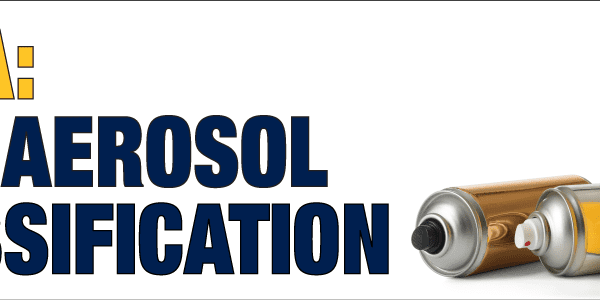Is it Time for a Change to the Consumer Chemicals and Container Regulations?
Since 2001 there have been very little changes to the Consumer Chemicals and Container Regulations (CCCR). In 2015, the Workplace Hazardous Materials Information System (WHMIS) integrated the UN Globally Harmonized System of Classification and Labelling of Chemicals, otherwise known as GHS. But these changes had no effect on consumer products, only industrial products. When comparing both regulations, CCCR and WHMIS, there are several differences. CCCR is designed to help protect the Canadian public against household products such as cleaning products, adhesives, and lubricants for specific hazards such as acute toxicity, corrosivity, flammability, pressurized containers, and quick skin bonding adhesives. WHMIS also has most of these classifications but more. WHMIS focuses more on workplace hazards and includes classifications such as reproductive toxicity, carcinogenicity, mutagenicity, respiratory and skin sensitizers, and specific target organ toxicity (basically chemicals that might target parts of the body such as liver, blood, etc.), as well as the classifications mentioned in CCCR.
Canada has proposed to align the CCCR to that of WHMIS, but not have decided on how to go about making these changes. One idea was to create a brand-new set of regulations, the other idea was to amend the existing regulations. This would incorporate the other health hazards that are not normally part of the CCCR. By incorporating these hazards other regulations dealing with areas such as child-resistant packaging, prohibitions, and restrictions could be expanded to include these other hazard classifications. This would allow the Canadian public to be aware of additional health hazards of the products they are purchasing.
But it’s not just the additional classifications that Health Canada wants to incorporate. They also want to change the information that appears on the label. This would mean swapping out the current labelling information to match that of what is displayed on a WHMIS label. This would include hazard and precautionary statements as well as signal words and introducing new pictograms. Health Canada has asked for input on the matter which is directed in the form of an email. Participation in this discussion is available from July 11, 2023, until October 9, 2023. The full Notice of Intent can be found here.
As of now in 2023, the United States has not given any indication that they are aligning their consumer regulations with that of GHS. Currently, only their workplace hazards (OSHA’s Hazard Communication Standard 2012) are aligned with GHS. The United States uses a specific framework of guidelines designed under the Consumer Product Safety Commission (CPSC).
ICC Compliance has the ability to produce and classify Canada and United States Consumer labels and address any packaging needs you may have. Our team of experts is just a call away for our customers at 855.734.5469 or send us an email, we’re happy to help.
Stay up to date and sign up for our newsletter!
We have all the products, services and training you need to ensure your staff is properly trained and informed.
 GHS Posters & Charts GHS Posters & Charts |
 OSHA/WHMIS/GHS OSHA/WHMIS/GHSTraining Courses |
References:


 GHS Workplace Labels
GHS Workplace Labels




 ICC USA
ICC USA ICC Canada
ICC Canada